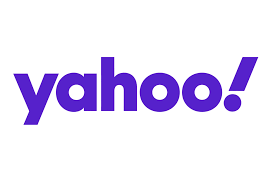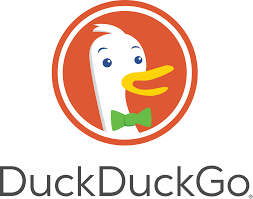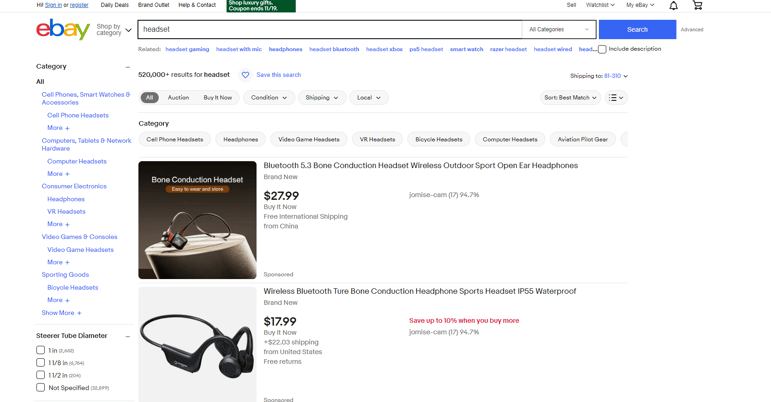Finding the right channels to promote and sell your products online is crucial for the success of your eCommerce business. However, not all eCommerce channels are created in the same way, and it's important to understand that they don't all cater to the same audience.
In order to stay ahead of the competition and maximize your online product visibility, it's essential for brands and online retailers to meet potential buyers at every relevant touchpoint. This means leveraging several eCommerce channels strategically at the same time - in other words - implementing a multi channel strategy.
In this article, we will delve into the world of eCommerce channels and explore how they can help increase your sales. So, let's dive in and find the perfect fit for your business.
Here are 6 steps on how to choose the best channels for your e-commerce business. More details further down in the article.
- Understand your industry and business model
- Get to know your customers
- Learn from your competitors
- Consider your budget
- Consider your geolocation
- Evaluate available resources and timeframe
What is multi channel eCommerce?
Multichannel eCommerce is the practice of selling products or services through multiple online platforms simultaneously. Instead of relying solely on a single website or one single online channel, businesses embrace a diverse range of sales channels to expand their reach and maximize sales potential.
Many retailers are eager to expand their online marketing strategy by incorporating more eCommerce channels, but feel unsure about where to begin.
The truth is, there isn't a one-size-fits-all solution when it comes to choosing channels that work for every business. With an overwhelming number of channels available, sifting through the options and determining which ones are worth exploring can be quite challenging. That's why, before investing into the specific channels, it's crucial to evaluate your business's marketing objectives and what you hope to achieve.
Consider the following goals for your business:
- Reaching out to completely new prospects
- Attracting potential customers during their search process.
- Re-engaging with past customers.
- Increasing the quantity and/or quality of website traffic.
Benefits on advertising on multiple channels
Advertising on multiple channels offers many benefits for businesses. Here are some advantages of advertising across different channels at the same time:
Expanded reach na possibility of increased sales
You can reach a wider audience and increase your brand visibility. Each channel attracts a unique set of users, allowing you to extend your presence beyond your usual target market. Potentially, it can bring you more sales.
Diversified audience targeting
Different channels attract different demographics and user behaviors. By advertising on multiple channels, you can tailor your messaging and targeting strategies to reach specific segments of your audience more effectively.
Increased brand awareness
Advertising on multiple channels helps you to build brand awareness. Consistent messaging across channels strengthens brand recognition and recall.
Enhanced customer engagement
Advertising on multiple channels allows businesses to interact with customers in different ways. For example, social media channels enable direct communication and engagement, while email marketing can provide personalized and targeted messaging. These interactions across different channels at the same time foster stronger relationships with customers.
Data insights and opportunity to compare and optimize
Advertising on multiple channels provides access to a wealth of data and analytics. You can analyze the performance of each channel, identify which ones are most effective in driving conversions, and optimize your advertising strategies accordingly.
Competitive advantage
Utilizing multiple channels gives you a competitive edge by reaching customers where your competitors may not be present. It allows you to stand out and differentiate yourself from others in the market.
Multichannel eCommerce platforms can really help!
Implementing a successful multichannel strategy is crucial for businesses looking to thrive in the competitive eCommerce landscape. Utilizing a multichannel eCommerce platform can really help them to achieve their goal. An example of such a platform is DataFeedWatch.
DataFeedWatch enables seamless management and optimization of product data across various channels, allowing businesses to effortlessly expand their reach and tap into new customer segments.
At its core, DataFeedWatch functions as a centralized hub for managing and optimizing product feeds. It seamlessly integrates with popular eCommerce platforms, such as Shopify, Magento, BigCommerce, WooCommerce, and more, allowing businesses to sync their product data effortlessly. You can easily map, transform, and optimize your product information to comply with the requirements of different advertising channels and marketplaces.
Moreover, you can set up specific rules to modify their product information, such as adjusting pricing, optimizing titles and descriptions, or categorizing products. These rules ensure that product data is accurately and consistently presented across all advertising channels, maximizing visibility and engagement.
DataFeedWatch provides seamless connections with various advertising channels and marketplaces, includingGoogle Shopping integration, Facebook Ads, Amazon, and more. By effortlessly connecting with these platforms, you can easily distribute your optimized product feeds across all these platforms, reaching wider audiences and expanding their online presence.
Different types of eCommerce channels
To develop a robust multichannel strategy, it is crucial to gain a comprehensive understanding of the different types of sales channels available. These major multiple sales channels include marketplaces, social media platforms, search engines, affiliate networks and comparison shopping engines.
By understanding the characteristics and potential of each sales channel, you can strategically choose the most relevant ones for your target audience and product offering.
Search Engines
It's a great choice if you want to sell to customers looking for specific products.
Search engines play a crucial role in the online shopping journey. Customers often turn to search engines like Google, Bing, or Yahoo to find specific products and make informed purchasing decisions. Optimizing product listings for search engines and leveraging paid search ads can help your businesses improve your visibility and attract potential customers who are actively searching for their products.

The search engine that dominates the market with over 83% share is Google.
Benefits
Search engine advertising offers several benefits for businesses. Here are some key advantages:
Increasing traffic
By advertising on search engines, you can increase your visibility and attract potential customers to your website and product catalog.
Ranking higher in search results enhances the chances of visitors finding your website and making a purchase from you. In fact, the top organic result on Google Search has an average click-through rate of 27.6% (according to Backlinko’s research). These clicks can ultimately lead to more conversions.
Targeting specific audience via ad campaigns
It’s not that simple to organically rank on the top of Google’s search results page. Search engines provide advertising solutions that allow brands to target specific audiences.
Through search engine ad campaigns, you have the opportunity to appear right at the top of the search results for your preferred audience by paying for that visibility (pay-per-click)
Increasing brand discoverability
With over 59% of shoppers using Google for research purposes, promoting your brand on search engines can significantly enhance the awareness of your brand. By appearing in search results, you connect with a vast audience actively seeking products or information related to your industry and brand. This exposure not only increases brand recognition but also establishes your business as a trustworthy authority in your field.

Examples of Search Engine channels
Search engine channels include various platforms where users conduct searches to find information. Here are some examples:
- Google Shopping
The most widely used search engine globally, offering organic visibility through SEO and paid advertising through Google Ads. Google Shopping allows businesses to display product ads directly in Google's search results. These ads showcase product images, prices, and store information, directing users to the seller's website.
When it comes to search engine ad types, there are at least five of them available: shopping ads, text ads, display ads, local inventory ads, and remarketing ads.
![]()
- Microsoft Bing
It’s another popular search engine, less used than Google but still significant, providing advertising options through Microsoft Ads. Similar to Google Shopping, Bing allows to showcase products within Bing's search results, providing product details and links to the online store.
Microsoft Bing offers more than ten ad types including product ads, dynamic search ads (DSA) and feed-based audience ads.

- Yahoo
While less dominant than in the past, Yahoo still serves as a search engine with advertising opportunities through Yahoo Gemini.
Yahoo offers several ad types: image ads, video ads, app install ads, carousel ads, Yahoo Mail ads and moments ads.

- Baidu
The predominant search engine in China, offering advertising services to target Chinese users.

- Yandex
A major search engine in Russia and neighboring countries, providing advertising options for businesses aiming at these markets.
- DuckDuckGo
Known for its privacy-focused search, it also offers advertising through sponsored search results but fewer than other major search engines. However it also lets advertisers tap into the broader Microsoft Advertising Network.

Social Media platforms
It's a great choice if you want to sell to customers looking for inspiration.
Social networks have become a daily hub for millions worldwide. With their rising popularity, they provide a great avenue for businesses to engage with customers and drive sales.
Recent statistics from Multichannel Marketing Report 2023 show that online retailers are increasingly turning to social media advertising platforms to connect with their desired audience, while traditional search-based channels like Google Shopping and Bing are losing traction.
There has been a significant rise of over 3 percentage points in the usage of social media channels for retail advertising from 2022 to 2023, while search channels have experienced a decline of more than 7 percentage points during the same period.
Source: Multichannel Marketing Report 2023
Platforms like Facebook, Instagram, Twitter, and Pinterest offer advertising opportunities and enable businesses to showcase their products directly to their target audience. In fact, selling through social media platforms got its own name - Social Commerce.
By leveraging social media platforms, businesses can create engaging content, run targeted ad campaigns, and cultivate a loyal following.

The strength of social media lies in its precise targeting capabilities. For instance, platforms like Facebook enable targeting based on specific lifestyles and behaviors. Using Dynamic Ads, Facebook ensures displaying the most fitting product to the right user at the right moment. This includes retargeting users based on various stages in the sales process, such as those who left items in their cart.
Pinterest, on the other hand, appeals to an audience seeking inspiration. Advertisers can connect with users who might not actively seek a product but remain open to fresh ideas.
Benefits
Leveraging social media for advertising offers numerous advantages:
Humanizing your brand
Engaging with customers through social media helps create a connection. Research from SproutSocial indicates that 76% of customers are inclined to buy from brands they feel connected to. This interaction fosters brand loyalty, making customers more likely to choose your brand.
Expanding customer reach and convenience
Social media facilitates reaching both existing and potential customers through organic methods as well as paid advertising. Additionally, platforms increasingly integrate native checkout options, allowing users to make purchases without leaving the app, enhancing convenience and encouraging sales.
Sustaining brand presence
Regular interaction on social media platforms helps keep your brand at the forefront of customers' minds. Continuously appearing in their feeds organically reinforces brand recall. Being visible when customers browse can prompt them to consider your brand first when they require a particular product or service.
Examples of Social Media channels
Several social media platforms offer opportunities for running product ads to promote and sell items:
One of the largest social media platforms, offering robust advertising options through Facebook Ads and Facebook Shops, allowing businesses to showcase and sell products directly on the platform.

Integrated with Facebook Ads Manager, Instagram provides various ad formats (such as photo ads, carousel ads, and shopping ads) for businesses to promote products to its visually-oriented user base.

Known for its visual discovery, Pinterest offers Shopping Ads that enable businesses to showcase and promote products to users actively seeking inspiration and ideas.

- Snapchat
With its engaged, younger user base, Snapchat offers advertising options like Collection Ads and Dynamic Ads to showcase products to its audience.
- TikTok
Growing rapidly, TikTok offers advertising opportunities like In-Feed Ads and Branded Hashtag Challenges, allowing brands to promote products to its diverse user base.
TikTok has seen a surge in popularity as an advertising platform, especially in the industries such as Health & Beauty and Apparel & Accessories. For example, over the course of 2022 and 2023, fashion advertisers have doubled their use of TikTok as an advertising channel, propelling it to become the 9th most effective channel in this industry.
=
Marketplaces
It's a great choice if you want to sell to customers looking for a great variety of products. Great if you want to delegate logistics to the 3rd party (marketplace).
Marketplaces are online platforms where businesses can list and sell their products alongside other sellers. Examples of popular marketplaces include Amazon, eBay, and Etsy. Leveraging marketplaces allows businesses to tap into an existing customer base and benefit from their extensive reach and established reputation.

Marketplaces allow customers to browse a wide range of products across different categories, just like in a digital department store. Their primary goal is to help online retailers increase traffic and sales. Some sellers are burdened with logistics, leaving them with less time for advertising - for them marketplaces like Amazon is a solution.
Additionally, online marketplaces empower sellers to maintain control over their product information, including pricing.

Although Amazon and eBay are well-known online marketplaces, they can be highly competitive in certain product categories and may not be the ideal choice for every business. Hence, it might be necessary to explore smaller, more specialized marketplaces, potentially even local ones that are still in the growth stage.
Benefits
Using online marketplaces for advertising offers several benefits:
Access to a ready-to-target customer base
Online marketplaces provide access to a pre-existing pool of engaged shoppers. By selling your products on a marketplace, you can tap into this established customer base. This saves you the effort and resources required to build and nurture your own customer base from scratch. Additionally, shoppers are more likely to trust the checkout process on a well-known marketplace.
All-in-one platform
When you sell on a marketplace, you don't need to worry about designing and maintaining your own website. Marketplaces handle the technical aspects, such as website design, security, and transaction processing, allowing you to focus on other aspects of your business.
Remarketing and display campaigns
Many marketplaces go the extra mile to promote your product listings. They often employ remarketing techniques to target interested customers who have previously shown interest in similar products. Furthermore, marketplaces may automatically include your product listings in display campaigns, increasing their visibility to potential buyers.
Examples of Marketplaces
When it comes to advertising, eCommerce retailers have a plethora of marketplaces at their disposal. Here are some examples of popular marketplaces used by eCommerce retailers for advertising:
- Amazon
As one of the largest online marketplaces, Amazon offers robust advertising options for sellers. With programs like Amazon Advertising, Enhanced Brand Content, and Amazon Stores, retailers can promote their products to a massive customer base.

- eBay
EBay is another well-known marketplace that provides advertising opportunities for eCommerce retailers. Sellers can use eBay Promotions Manager to create special deals and discounts to attract buyers.

- Etsy
Known for its focus on handmade and unique products, Etsy is a marketplace favored by artisans and crafters. Retailers can utilize Etsy advertising features to boost the visibility of their products within the platform.

- Walmart Marketplace
With millions of customers, Walmart Marketplace is an attractive option for eCommerce retailers. Sellers can leverage Walmart's advertising solutions, such as Sponsored Products and Display Ads, to reach a wide audience.

- Rakuten
Rakuten, also known as the "Amazon of Japan," is a global marketplace that offers advertising services to retailers. Rakuten Advertising provides tools for running display ads, affiliate marketing, and more.

Affiliate networks
It's a great choice if you want to diversify your sources of traffic and expand your reach.
Affiliate networks offer you the opportunity to partner with affiliates who promote your products in exchange for a commission on sales. This type of channel expands reach by allowing affiliates to market products through various online channels, such as websites, blogs, or email newsletters.
Affiliate networks act as intermediaries between publishers and advertisers, allowing for easier partnerships in the digital marketing space. The diverse range of websites and channels available through affiliate networks makes them an attractive option for retailers seeking to expand their reach, or enhance the quality of their online traffic.
By utilizing affiliate networks, you can upload your product data feed to a centralized platform. This allows publishers to choose specific products to promote on their own websites. A predetermined commission rate is agreed upon between you and the publisher, which is earned when a click, sale, or lead generation occurs.
Benefits
Partnering with affiliates through an affiliate network offers several benefits for selling your products:
Trustworthy influencer messaging
According to a study by Oracle, consumers trust social media influencer messaging more than branded messaging. By working directly with affiliate marketers, you can tap into this trust and leverage influencers' credibility to promote your products.
Time and effort saving
Researching and vetting affiliates for your brand can be a time-consuming task. It requires evaluating their audience demographics, engagement rates, content quality, and reputation. Partnering with an affiliate network saves you time and effort by automatically connecting you with pre-vetted affiliates who align with your target demographic.
Expanded reach
By partnering with a diverse group of affiliates through a network, you can tap into their existing follower base and expand your brand's reach. Each affiliate may have a unique audience segment, allowing you to target multiple demographics and potentially reach new customers who may not have been aware of your brand otherwise.
Highly targeted marketing
An affiliate network connects you with affiliates whose following matches your ideal customer profile. This means that the affiliates already have an engaged audience that aligns with your target demographic. By partnering with them, you can ensure that your marketing efforts are highly targeted, reaching the right people who are more likely to be interested in your products.
Examples of Affiliate networks
When it comes to selling products through affiliate networks, there are several options available. Here are some examples of affiliate networks that you can use to sell your products:
- Shopify Collabs
Shopify Collabs is an affiliate network specifically designed for Shopify store owners. It allows you to connect with influencers and affiliates who can promote your products to their audiences, helping you reach a wider customer base.

- AWIN
AWIN is a global affiliate network that connects advertisers with publishers across various industries. It offers a vast network of affiliates who can promote your products and help increase your sales.

- CJ Affiliate
CJ Affiliate is one of the largest and most well-known affiliate networks. It provides access to a diverse range of affiliates who can promote your products on their websites, blogs, and social media platforms.
- Rakuten Advertising
Rakuten Advertising offers a comprehensive affiliate marketing solution with a global network of affiliates. It provides advanced tracking and reporting tools, helping you optimize your campaigns and maximize your sales.

- Partner-Ads
Partner-Ads is an affiliate network that primarily operates in Denmark, Sweden, and Norway. It connects advertisers with vetted affiliates who can promote their products or services to their respective audiences.

Comparison shopping engines
It's a great choice if your products are priced competitively or if price is a significant factor for your target shoppers.
Comparison shopping engines (CSEs), also known as price comparison websites, are online platforms that allow consumers to compare prices and product information from multiple retailers in one place.

Idealo
These websites aggregate data from various online stores, presenting shoppers with a comprehensive view of available options for a particular product. Users can search for specific items and see a list of retailers offering those products along with their respective prices, shipping costs, and other relevant details.
These platforms attract shoppers actively seeking good deals, providing an opportunity for retailers to showcase their products alongside competitors. By monitoring and adjusting your pricing regularly, you can increase your chances of winning sales on these platforms. When a shopper clicks on your offer, they will be directed straight to your website to complete the transaction.
Benefits
Using price comparison engines for selling your products offers several benefits.
Increased visibility
Price comparison engines attract a large number of shoppers actively looking for the best deals. By listing your products on these platforms, you increase your visibility and reach a wider audience.
Competitive advantage
Price comparison engines allow shoppers to compare prices from different sellers side by side. If your products are competitively priced, you have a higher chance of attracting customers who are seeking the best value for their money.
Cost-effective marketing
Compared to traditional advertising channels, listing your products on price comparison engines can be a cost-effective marketing strategy. Instead of spending a significant amount on ads, you only pay a commission when a customer makes a purchase through the engine.
Valuable insights
Price comparison engines often provide analytics and data on customer behavior, including click-through rates and conversion rates. This data can help you gain insights into consumer preferences, pricing strategies, and market trends, allowing you to optimize your selling approach.
Examples of price comparison websites
Here are some examples of popular price comparison websites that you can use to sell your products:
- Idealo
Idealo is a popular price comparison website that operates in several countries, including Germany. It allows users to compare prices across various online retailers, helping them find the best deals on products. Idealo offers a range of features to assist shoppers in their purchasing decisions, such as product specifications and reviews.
- Prisjagt
It’s a price comparison platform based in Denmark. It provides a similar service to Idealo, allowing users to compare prices from different retailers and find the best deals. Prisjagt covers a wide range of product categories, including electronics, home appliances, fashion, and more.
- PriceGrabber
PriceGrabber is a well-established price comparison website that allows shoppers to compare prices across various online retailers. You can list your products on PriceGrabber to reach a wider audience.
- Shopzilla
Shopzilla is another popular price comparison platform that helps customers find the best prices for products. By listing your products on Shopzilla, you can attract potential buyers who are actively comparing prices.
Choose the right channels for your eCommerce business
These days, having a strong multichannel strategy is crucial for success. However, determining which channels to add to your strategy can be a daunting task. In this chapter, we will explore the key factors to consider when choosing the right channels for your eCommerce business.

1. Understand your industry and business model
- What are the unique characteristics and requirements of your industry?
- Do you prioritize maintaining control over the customer experience or reaching a larger audience?
- How can social media and search engine campaigns drive traffic to your website and promote brand recognition while maintaining ownership of the customer relationship?
The first step is to assess your industry and business model. Each industry has unique characteristics and requirements. Consider whether you want to maintain control of the customer experience or if reaching a larger audience is your top priority.
For example, a manufacturing brand that sells directly to consumers can take advantage of social media or search engine campaigns to drive traffic to their website and promote brand recognition, but it's not obvious whether this approach will drive sales.
The more promising approach is to combine these two channels. In fact, 45.90% of all companies pair the Google Shopping channel with social ads (Facebook) and it seems to be working for them.

Source: Multichannel Marketing Report
Marketplaces will be the best choice if your brand is already well-known and you're aiming to increase revenue.
2. Get to know your customers
- What trends can you identify from analyzing your current customer lists?
- Are your customers on a specific channel?
- Does the channel provide you with a high degree of flexibility when it comes to targeting?
Understanding your customers is paramount for eCommerce success. Analyze your current customer lists and identify any trends. Conduct surveys to gain insights into their pain points and purchasing decisions.
By building buyer personas, you can create a clear profile of your ideal customer. This will help you determine which channels align with their preferences and where they are most likely to discover your products.
3. Learn from your competitors
- How can conducting a competitive analysis within your industry help you identify effective strategies?
- What channels have worked well for your successful competitors?
- How can you refine your own multichannel eCommerce strategy based on your competitors' approaches?
Analyzing successful competitors provides valuable insights into effective strategies. Conduct a competitive analysis within your industry and identify the channels that have worked well for them. While you should not blindly copy their approach, this research will help you refine your own multichannel eCommerce approach and minimize errors.
4. Consider Your Budget
- How can you evaluate your budget limitations when expanding into new channels?
- How can you allocate your resources wisely?
- What channels offer a good return on investment and enable you to capture low-hanging fruits?
Expanding into new channels requires time, effort, and investment. It's crucial to evaluate your budget limitations and allocate resources wisely. Start by adding channels gradually to avoid overwhelming your operations. Focus on channels that provide a good ROI and enable you to get more out of a small effort. For example, search channels and retargeting can be effective options for businesses with lower budgets.
The Multichannel Marketing Report 2023 reveals that the larger the store online retailers have, the more channels they use. So the number of channels used is closely related to the size of the business and, indirectly, the budget level.

Source: Multichannel Marketing Report
5. Consider your geolocation
- Which local channels are popular in the region you want to advertise in?
- Have you researched the preferences and behavior of your target market?
Consider your geolocation when it comes to choosing the right channels for multichannel selling. Investing in local channels can be highly beneficial, especially if they have a strong presence and customer base in your region. By leveraging these platforms, you can tap into a localized audience and increase your chances of reaching potential customers.
In the context of Nordic countries, there are several popular local channels that you can consider. Some examples include PriceRunner, Prisjagt (Prisjakt) or Kelkoo. When it comes to the U.S., local channels such as Bazaarvoice or Sharasale are worth mentioning.

Source: Multichannel Marketing Report
More statistics inside the report.
These platforms have gained great popularity and trust among customers in their respective regions, making them ideal options for expanding your multichannel sales strategy. Keep in mind that understanding the preferences and behaviors of your specific target market in that specific region will further enhance your success in using these local channels.
6. Evaluate available resources and timeframe
- Do you have the capacity to optimize and maintain each chosen channel on an ongoing basis?
- What resources are available to effectively manage your chosen channels?
- How can investing in good multichannel e-commerce platform streamline processes and minimize manual tasks or IT support?
Assess the resources available to manage your chosen channels effectively. Consider whether you have the capacity to optimize and maintain each channel on an ongoing basis. Text ads, for example, require fewer resources compared to shopping ads.
Investing in a good multichannel ecommerce solution that helps you streamline processes and minimize the time spent on manual tasks or IT support. You also get a centralized eCommerce platform from which you can manage feeds for all the channels you use.
Conclusion
Choosing the right channels for your eCommerce business requires careful consideration of your industry, customers, competitors, budget, and available resources. By analyzing these factors, you can identify relevant and effective eCommerce channels.
Remember, the eCommerce landscape is constantly evolving, and what works today may not work tomorrow. Therefore, it's essential to stay up-to-date, adapt to new trends, and regularly evaluate the performance of your chosen channels. We encourage you to share your thoughts and experiences in the comments section below.
In the meanwhile, take some time to read other articles related to this topic:
What is Multichannel eCommerce Listing & Management?
How to Easily Create a Multichannel Strategy with Shopify
[Case Study] Managing Multiple Feeds for Multiple Clients with 136% Revenue Increase
Multichannel vs Omnichannel: What’s The Difference?

